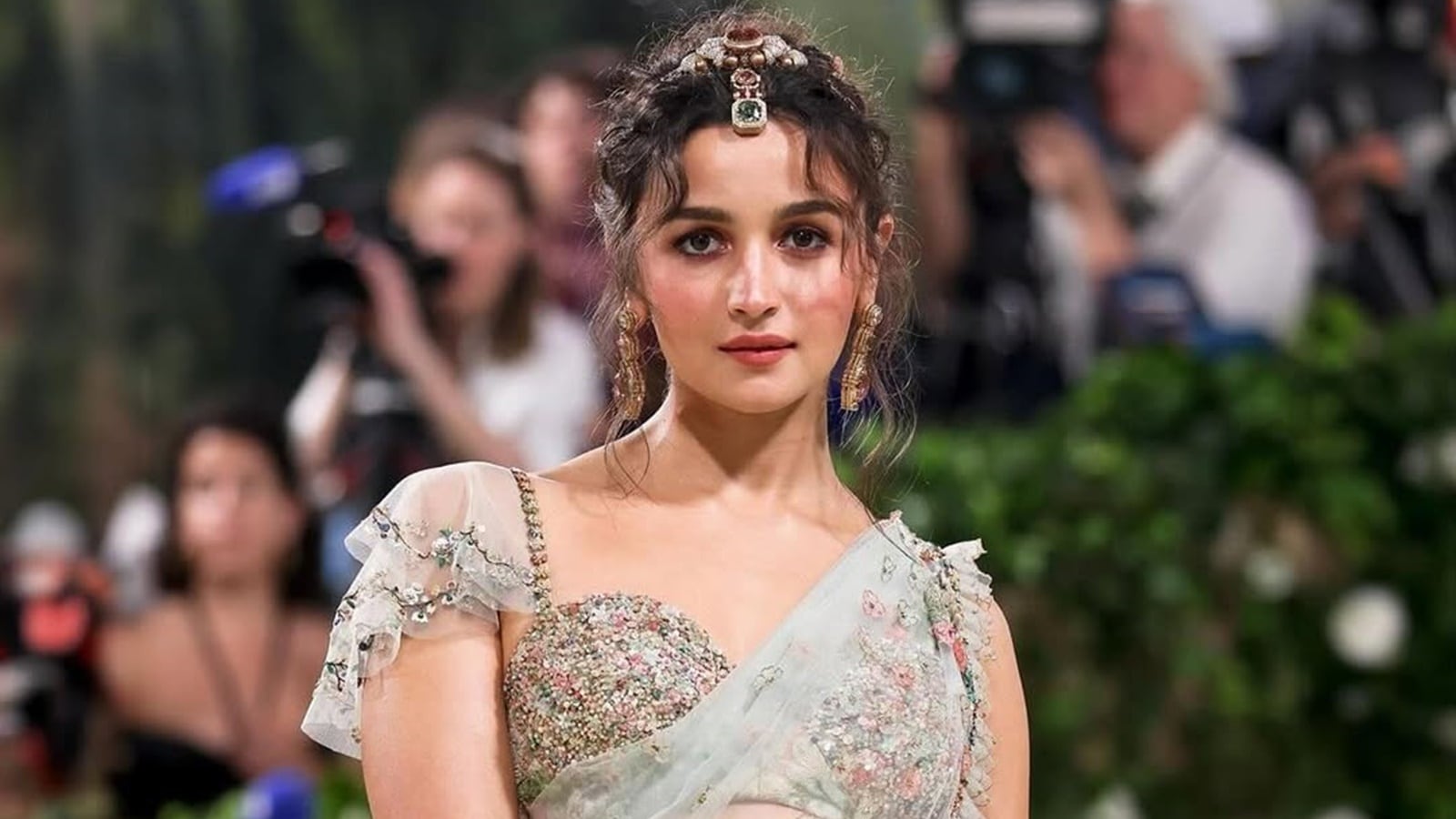My eyes, of their own accord, opened at 7 AM on the dot this Monday morning — a feat rarer than Halley’s comet, but an Oscar-night ritual for those of us who celebrate. As I browsed through the red carpet looks, hoping for the extravagance to propel me from bed to action, the opposite happened. I wanted to burrow deeper in my kambal at the sheer mundanity of fashion.
This disappointment, however, is not new, and unsurprisingly, one I share with other fashion commentators. On a phone call with celebrity stylist Rishi Raj, both of us were left lamenting “how the looks just did not look” (Gen Z speak for falling flat on their face) at the Oscars red carpet this season.
“The red carpet had some strong moments, but nothing groundbreaking. Classic silhouettes, luxurious fabrics, refined styling—everything was elegant and polished but predictable. Even so-called ‘experimental’ looks felt safe, tied to actors’ on-screen personas. We’re missing spontaneity and real risk-taking,” Raj told me.
Sure, the Met Gala is where avant-garde thrives, but shouldn’t the Oscars still have moments that take our breath away—like Nicole Kidman in her yellow John Galliano for Christian Dior gown in 1997 or Julia Roberts in her Armani suit at the 1990 Golden Globes?
nicole kidman at the oscar’s in 1997 wearing dior haute couture by john galliano, spring 1997 pic.twitter.com/yLq0PemFA5
— colman domingo’s oscar campaign manager (@myfairslady) June 4, 2023
This obsession with nostalgia could perhaps be the reason we’re seeing a resurgence of old-world Hollywood glamour. From Selena Gomez’s Ralph Lauren dress inspired by yesteryear actor Sophia Loren to Elle Fanning in Sarah Burton’s Givenchy, the Oscars were replete with vintage silhouettes.
‘Classic glamour photographs beautifully’
“This revival isn’t just about aesthetics—it taps into a broader cultural moment,” said Henna Parimoo, assistant professor, fashion styling, Pearl Academy. When I asked her why she thinks classic glamour is back in the game, she said, “Well, besides being the golden era of storytelling, in uncertain times (socially, politically, and economically) people often look back to times that feel safe, elegant and idealised. Old Hollywood, with its polished elegance and larger-than-life stars, represents a sense of order, beauty, and aspiration that feels reassuring.”
“Classic glamour photographs beautifully. Whether it’s a plunging satin gown, dramatic opera gloves, or timeless curls. These visuals thrive on platforms like Instagram, YouTube shorts, and Pinterest, which are driving fashion cycles faster than ever,” Parimoo said.
Raj echoed this sentiment, adding social media has sped up trend cycles, leaving people craving something timeless, something that isn’t just a fleeting TikTok moment. “In fashion, this translates to structured silhouettes…opera gloves…draped gowns…and classic beauty looks…things that feel polished, considered, and cinematic,” he said.
This shift towards calculated, carefully curated red carpet moments contrasts sharply with past eras when a single look—Cher’s extravagant Bob Mackie ensembles or Björk’s infamous swan dress—could define an entire awards season.
Story continues below this ad
 Björk and the legendary “Swan Dress” designed by Marjan Pejoski, worn here at the 2001 Academy Awards (Source: Wikimedia commons)
Björk and the legendary “Swan Dress” designed by Marjan Pejoski, worn here at the 2001 Academy Awards (Source: Wikimedia commons)
‘Fashion at this level is highly PR-driven’
According to Raj, Stars now dress according to public perception. “Alia Bhatt does soft, romantic elegance; Deepika Padukone does powerful, structured silhouettes,” he said.
This is not to say stars do not experiment with their looks. From Cynthia Erivo to Ranveer Singh, many are known for their propensity to exaggerate when it comes to fashion. Yet, it feels like they’re following a dotted line invisible to the naked eye, but within the safety net of approved designer labels and safe silhouettes.
“There’s little real unpredictability. Fashion at this level is highly PR-driven. Celebrities aren’t dressing for themselves, they’re dressing for brand deals, movie promotions, and social media approval. So, even when they ‘experiment,’ it’s within a very calculated framework,” Raj said.
According to Parimoo, what’s missing in both industries is the unexpected, personal style moment — where a star’s personality, not the film, leads the fashion. “We rarely see someone just having fun with clothes anymore,” she said.
Story continues below this ad
 Alia Bhatt in Sabyasachi for Met Gala 2024 (Source: Instagram/@anaitashroffadajania)
Alia Bhatt in Sabyasachi for Met Gala 2024 (Source: Instagram/@anaitashroffadajania)
‘The moment a look debuts, it’s dissected, memed, praised, and criticised within hours’
Another reason why nothing seems to make a splash as much as it would’ve pre-aughts is because the relentless pace of the Internet has left fashion feeling increasingly repetitive. “The moment a look debuts, it’s dissected, memed, praised, and criticised within hours. By the time the next event happens, we’ve already moved on,” according to Raj. “This creates a feeling of monotony—nothing shocks or excites because we’ve already seen every reference, every silhouette, every detail before.”
For Bollywood, this effect is perhaps even sharper. Indian celebrities are no longer just dressing for local audiences, they’re dressing for a global internet, which means playing it safe often feels like the smarter move. “Go too bold, and you risk trolling or being misunderstood. Stay too safe, and you risk being called boring. It’s a ‘no-win’ situation, which is why so many looks land in this middle ground, i.e. technically correct, but emotionally flat,” says Parimoo.
And then, there’s the question of how gender plays into red carpet discourse. This pressure to constantly innovate seems to fall harder on the shoulders of female celebrities.
‘Why do men get away with wearing the same thing?’
Parimoo explains, women in entertainment have long been expected to use fashion as a tool to perform multiple roles at once—exuding beauty, sex appeal, elegance, and creativity, often within the confines of public expectation. “Fashion has been positioned culturally as something women are ‘supposed to care about,’ which means female celebrity style gets hyper-scrutinized,” she notes. Meanwhile, men receive praise for even the smallest departures from the norm. “He wore a red suit instead of black, groundbreaking!” she quips, highlighting the stark contrast in fashion discourse between genders.
Story continues below this ad
Part of this imbalance stems from how fashion has been woven into the identity of women in public life, whereas for men, it has traditionally been viewed as secondary to their talent or persona. Fashion commentary often skews towards female celebrities, with detailed analyses of their gowns, accessories, and styling choices, while men’s fashion coverage remains surface-level unless a star like Timothée Chalamet or Harry Styles deliberately challenges norms.
 Timothee Chalamet at the 2025 Oscars red carpet (Source: Reuters)
Timothee Chalamet at the 2025 Oscars red carpet (Source: Reuters)
As more stars embrace daring styles, Raj argues that men’s fashion should be treated as its own evolving space rather than a comparison to women’s. “Instead of asking ‘Why do men get away with wearing the same thing?’ we should be asking, ‘What’s the next evolution for men’s fashion?’ Who is pushing the boundaries? Who is redefining masculinity through style?”
Where do we go from here? If the red carpet is to reclaim its status as a space for daring, individualistic fashion, it must make room for unpredictability—whether through personal style statements, bolder risks, or a reevaluation of how fashion is critiqued across genders. A return to authenticity, where stars dress to express rather than impress, could be the key to breaking the monotony. After all, the most memorable red carpet moments are not just about aesthetics but about the personalities, stories, and cultural shifts they embody. Until then, we may continue to wake up on these Oscar mornings hoping for spectacle, only to find ourselves burrowing deeper under the covers, still waiting for that elusive spark.

